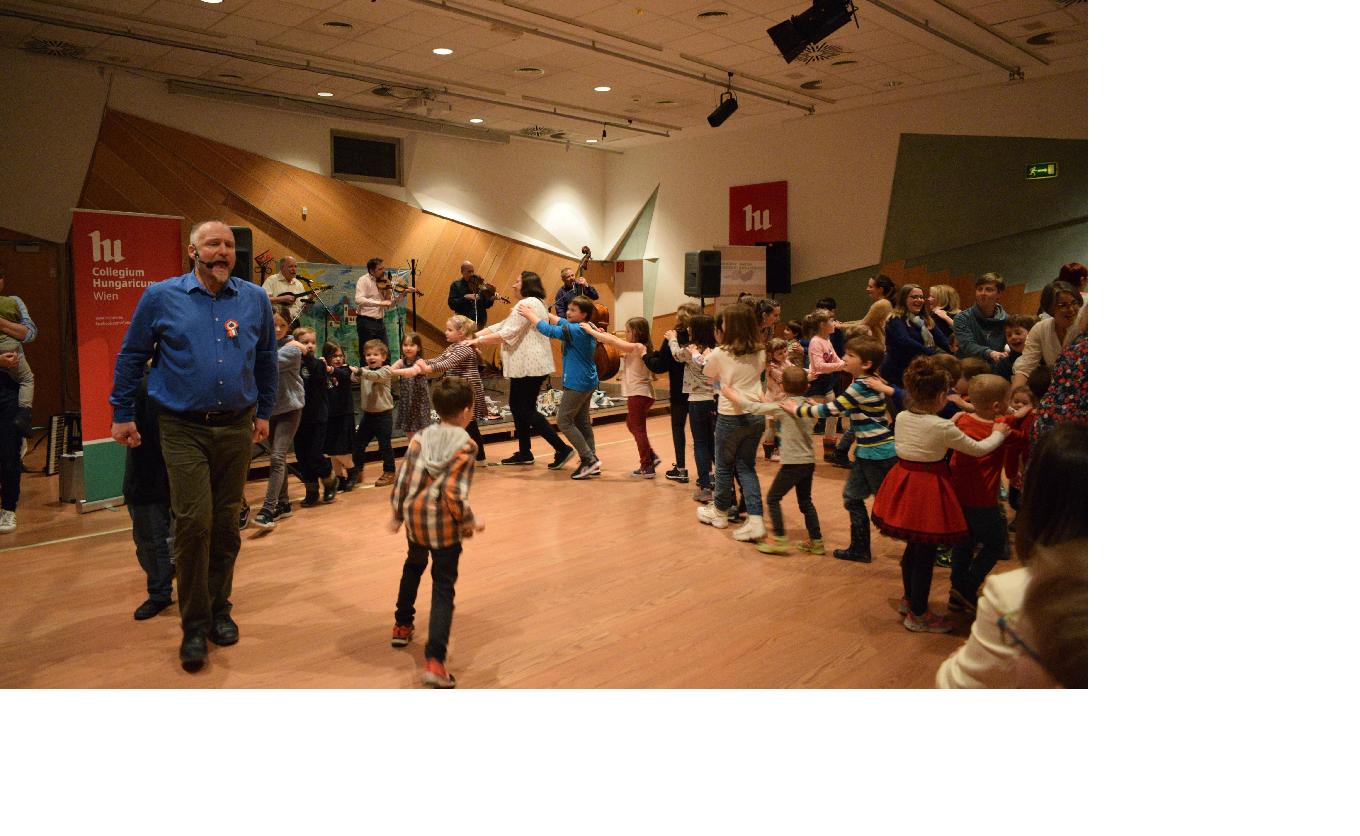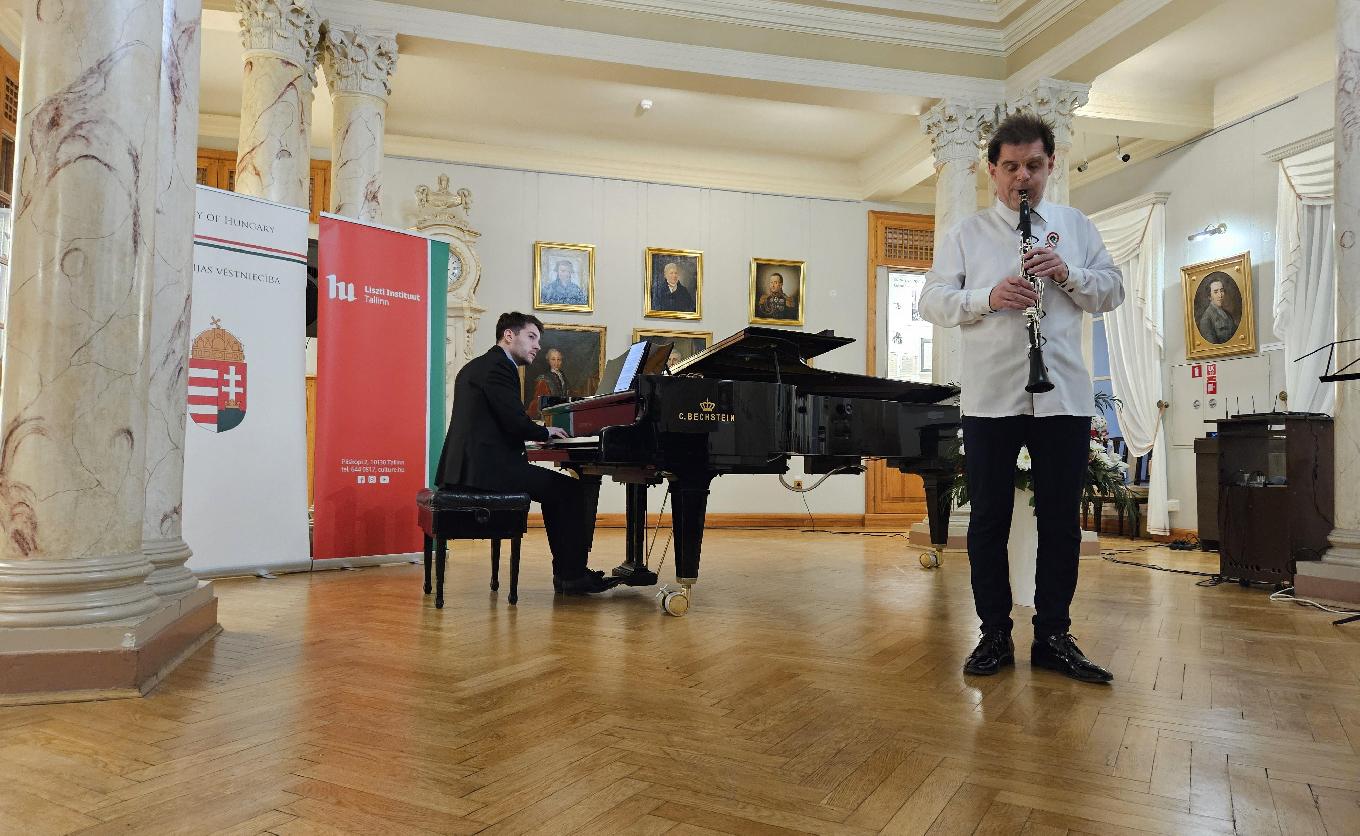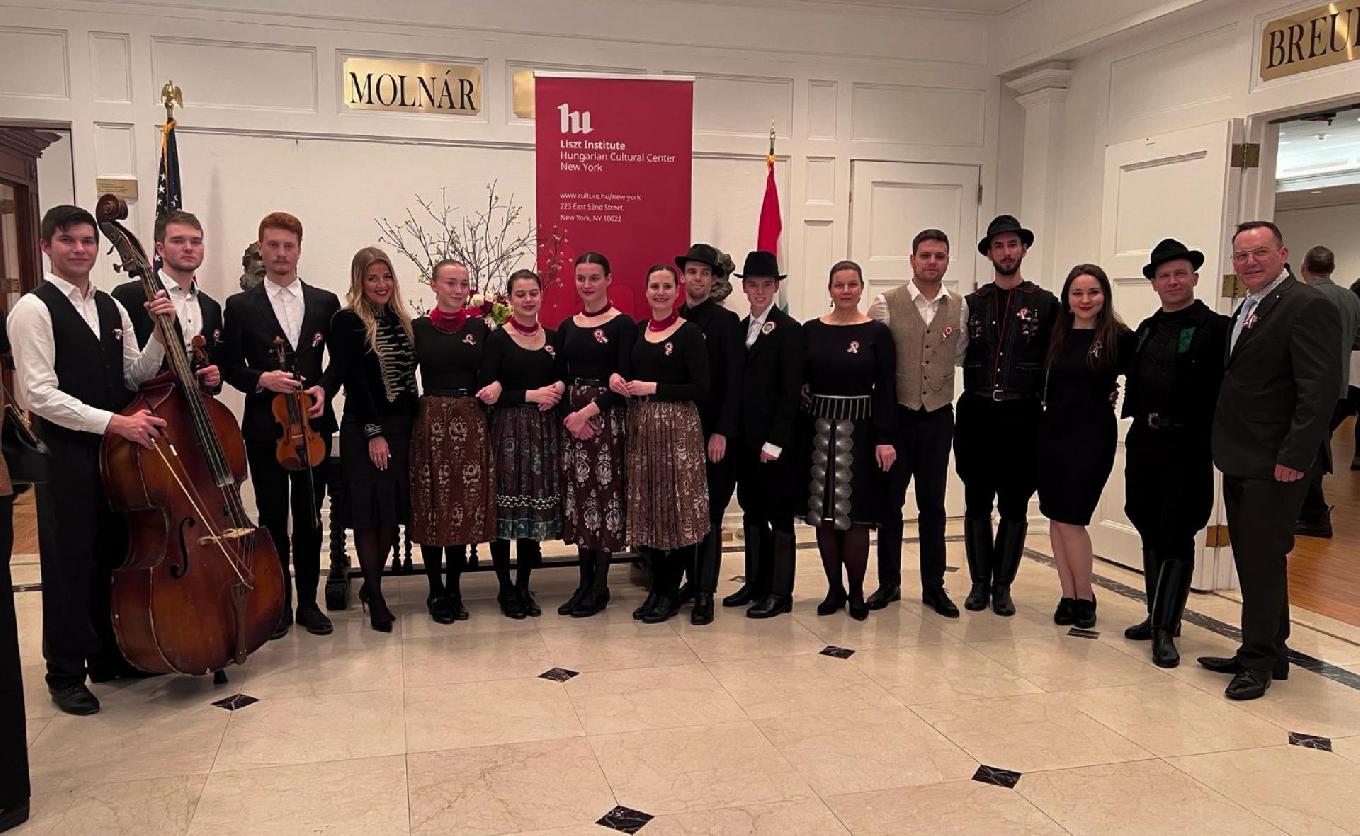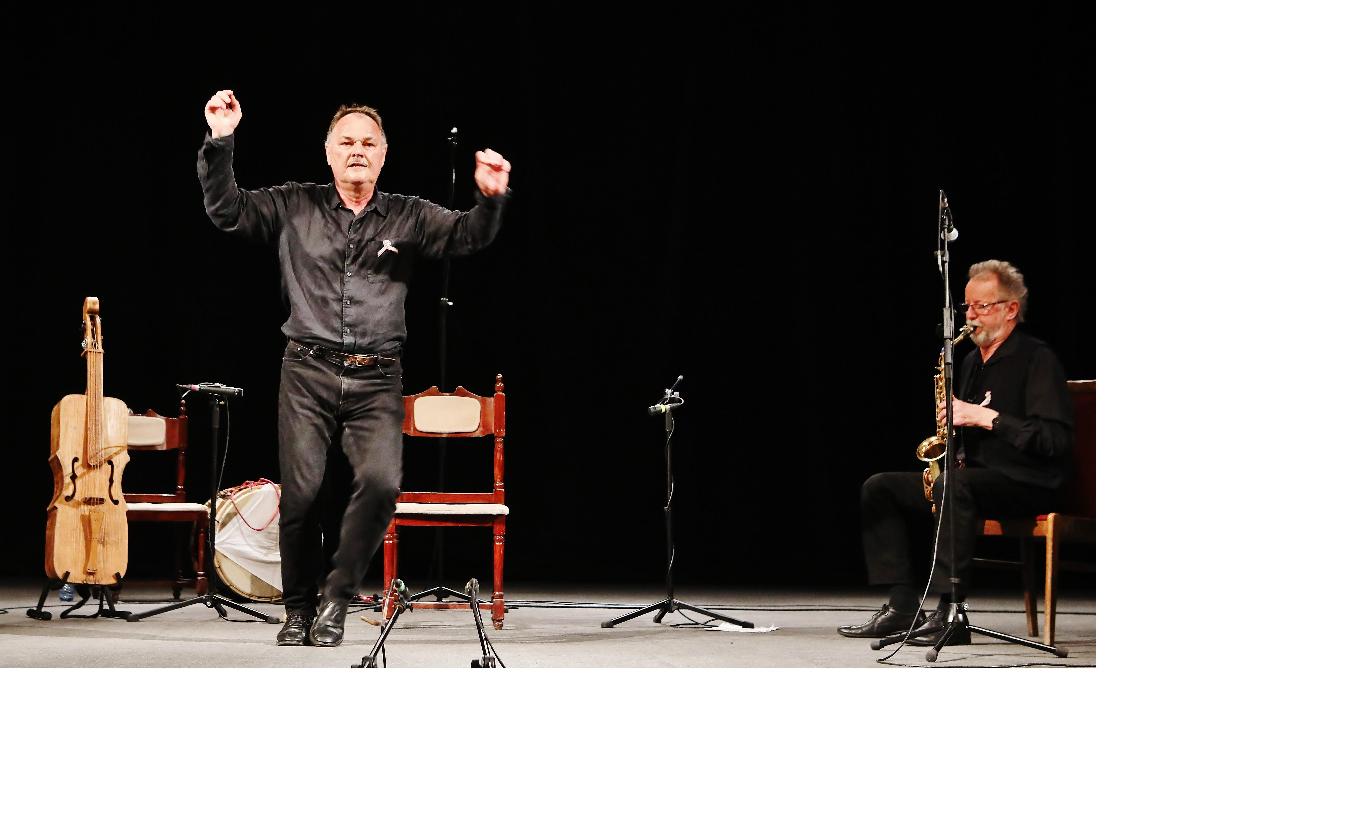The Hungarian cultural institutes worldwide paid tribute to the events and heroes of the Hungarian Revolution and War of Independence of 1848-49. Through film screenings, theatrical performances, wreath-laying ceremonies, entertaining children's shows, and concerts, they commemorated the revolutionary events of our national holiday.
The Liszt Institute in Moscow commemorated the events and heroes of the 1848-49 revolution and war of independence on March 13, 2024, during a ceremonial reception at the Hungarian Embassy in Moscow. As part of the event, the Golden Horn brass band dressed in hussar uniforms performed. In the embassy's ceremonial hall, a 1-meter-high 1848-themed illuminated lampstand and a 4-meter-wide LED screen projected animations and film excerpts related to the hussar theme. On March 15, 2024, the official blog of the Liszt Institute in Moscow published the "1848/49" memory game, which presents the main locations and figures of the Hungarian Revolution and War of Independence.
In cooperation between the Liszt Institutes in Tallinn and Helsinki, the traditional Hungarian national holiday reception on March 15th was held in Tallinn at the Teachers' House. As part of the program, Lajos Rozmán, Liszt Ferenc Prize-winning clarinet artist, performed a concert accompanied by pianist Dávid Szilasi. The program mainly featured Hungarian works, such as Zoltán Kodály's "Epigrams," László Sáry's "Grandma's Dance," Béla Bartók's "Evening in the Transylvanian Village," and "Dances of Marosszék."
The Liszt Institute in New York released a highly successful promotional video featuring folk dancer István Berecz, paying tribute to the events of the Hungarian Revolution and War of Independence of 1848-49. The footage was shot at the most frequented locations in New York, including the Brooklyn Bridge, Dumbo neighborhood, Times Square, and Central Park. The video reached over 40,000 people and generated nearly three hundred shares on the institute's social media platforms within two days. Additionally, at the Hungarian House in New York, attendees had the opportunity to watch a performance by the Déryné Troupe that focused on Petőfi, not by exploring the vast body of work or the unfortunately short life of Sándor Petőfi but by providing insight into his greatest passions through the performance of his most diverse texts, touching on the central themes in Petőfi's life.
The Liszt Institute in Istanbul held a wreath-laying ceremony and commemoration at the grave of Richárd Guyon in the Haydarpaşa Cemetery in Istanbul. Guyon served in the army of the Ottoman Empire from the end of 1849 until his death. From 1854 to 1856, he was the chief of staff of the Caucasian Turkish Army. His tomb was renovated by Hungary in 1956 and 1998. In 2001, the Hungarian-Turkish Friendship Society and the Hungarian Academy of Sciences placed a Zsolnay pyrogranite Kossuth coat of arms at the grave. The commemoration was attended by Dr. Attila Pintér, Consul General, Áron Sipos, the director of the institute, Gergő Kovács, cultural attaché, and the staff of the consulate.
The Liszt Institute in Tokyo contributed to the success of the commemorative event by organizing a special program in cooperation with the embassy. Keijiro Takaku, a Japanese folk musician, was the performing artist, who, after several decades of staying in Hungary, returned to Japan. The musician, skilled in Hungarian folk music and playing multiple instruments, performed songs such as "Klapka March," "In the Camp of Lajos Kossuth," and "Lajos Kossuth Sent the Message" on the hurdy-gurdy. The more than one hundred guests sang along with the performer. Following the program, traditional Hungarian dishes and wines were enjoyed by the guests.
The festive reception organized by the Liszt Institutes of Seoul and the embassies took place on March 14th. At the event, after the ambassador's welcome speech, the nearly hundred participants sang the national anthem and the Kossuth song, followed by a Hungarian and Korean folk song performed by the Korean Kodály Society. The event concluded with a raffle, where the Liszt Institute drew 20 tickets for the Victor Vasarely exhibition, which can be visited until April 21st, 2024.
On March 14th, the Liszt Institute of Brussels held a workshop for making cockades. Led by coordinator Villő Vajda, the participants had the opportunity to create unique felt cockades. The following day, a wreath-laying ceremony took place at the memorial plaque of Baron Miklós Jósika. The commemorative event featured a speech by Ambassador Dr. Tamás Iván Kovács and a prayer by Reverend Ákos Topolánszky. On the same day, they also laid wreaths at the gravesite of Kossuth Lajos' mother, Kossuth Lászlóné (born Karolina Weber).
The Liszt Institute of London screened the Hungarian historical adventure film "The Hadik" (2023), which portrays one of the most glorious yet less discussed moments in history. The movie brings the event to life with a star-studded cast and spectacular action scenes, depicting the daring hussar exploits of András Hadik and his determined team. The film was shown in Hungarian with English subtitles through an online platform. The screening was organized jointly by the Hungarian Consulate General in Manchester, the Hungarian Consulate General in Edinburgh, the Liszt Institute of London, and the National Film Institute as part of the Hungarian Movie Nights series.
The Liszt Institute of Helsinki presented the costume adventure film "80 Hussars" (1978) by Sándor Sára on March 15-16 as part of their online film club. The story is set in a small Polish town where Captain Farkas Paál's (played by László Dózsa) hussar regiment is stationed at the outbreak of the Hungarian revolution in 1848. The Hungarian soldiers receive the proclamation urging the hussars to return home. One of the members of the regiment, András Korsós (played by József Madaras), attempts to escape but gets caught and publicly flogged, inciting the local Poles. The Austrian high command orders the hussars to suppress the unrest, but they refuse and decide to return to Hungary. Along their journey, they have to contend not only with the forces of nature but also with the pursuing imperial troops.
The Embassy of Hungary in Sofia and the Liszt Institute of Sofia organize wreath-laying ceremonies in Bulgarian rural settlements that preserve the memory of the 1848-49 revolution and war of independence. They paid tribute to István Dunyov's memorial in Csiprovci, where Kossuth and his companions found refuge in Vidin, and in Svishtov, the city that generously welcomed Lajos Kossuth and his entourage. In the latter location, wreaths were placed at the Kossuth House and a military ritual was performed at the Kossuth Monument. The traditional commemoration in Sofia took place at the memorials of Kossuth and Petőfi, with speeches by Ambassador Dr. Miklós Boros of Hungary and the Mayor of Krasno Selo District.
On the occasion of the anniversary of the outbreak of the Hungarian revolution in 1848-49, representatives of the Warsaw Embassy, the Liszt Institute of Warsaw, and the Hungarian Association in Poland laid a wreath at the Bem Memorial in Warsaw's Łazienki Park.
The Collegium Hungaricum in Vienna commemorated the 1848-49 war of independence on March 11th with a children's program titled "The Hussars Are Coming..." presented by the Kolompos Ensemble. The event, attracting over a hundred attendees, vividly depicted the era of the revolution and war of independence with a painted rural landscape backdrop, child actors dressed as hussars, a small drummer, flag bearers, girls bidding farewell with headscarves and waving handkerchiefs, and traditional verbunkos dance and music. After the concert and the story, everyone in the hall joined in dancing, both young and old.
On March 14, 2024, the Liszt Institute of Zagreb commemorated the anniversary with a wreath-laying ceremony at the memorial plaque of Sándor Petőfi. Members of the Sorgyalog Association, two Hungarian soldiers, two Croatian border guards, and a representative in imperial attire participated in the event, presenting their uniforms and standing guard. Following the ceremony, the institute hosted a traditional national reception, where Ambassador Dr. Csaba Demcsák delivered a speech and presented an award to Franciska Ćurković-Major, an associate professor of Hungarian Studies. The national anthems were performed by Szilárd Balanyi, and Dorina Galambos and Flóra Kiss enriched the commemoration with songs from 1848.
At the Collegium Hungaricum Berlin (CHB), the joint celebration of Hungarian diaspora organizations was a great success. The CHB building was filled with various programs for six hours, including a gala performance by participating associations with diverse artists, folk music and dance workshops, informal socializing, children's folk games, and a rock concert. Nearly three hundred attendees, mostly Hungarians, visited the institute. The event was supported by the Kőrösi Csoma Sándor Program. The Hungarian news channel M1 provided live coverage of the Hungarian Day during their evening news program on March 16, 2024.
The Liszt Institute of Bratislava organized a theater performance titled "Prediction - Scenes from the Life of Sándor Petőfi." The poetic play provided insight into the life of the renowned Hungarian poet. Agnes Linka's mini-play was realized in collaboration with the Benedek Csaplár City Cultural Center in Dunajská Streda. In addition to the theatrical performance, a wreath-laying ceremony and commemoration took place at the Petőfi statue in Bratislava. The theater play "The World and the End" was also presented at the Cultus Ružinov Cultural Center in Bratislava.






